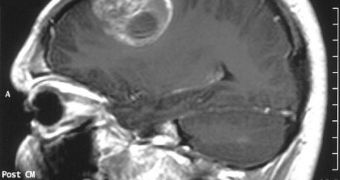Regardless of its type, brain cancer is fast and deadly. But one particular form of tumors, known as glioblastoma multiforme, is extremely apt at spreading incredibly fast in healthy neurons, causing inoperable tumors, and killing people very fast. Researchers have always wondered what promotes such a rapid development of this type of cancer, but the answer has remained elusive. Now, a group of experts has managed to determine that it may be two genes that promote the spread of this cancer.
The latest investigation was carried out by researchers at the Columbia University, the BBC News reports. Details of the team's work appear in the latest issue of the respected scientific journal Nature. Healthcare experts and geneticists say that the new discoveries bring new hopes that a cure for glioblastoma could soon be identified. Until now, researchers looking into creating drugs against this condition have been in the dark, as they have had no idea what the root cause of the cancer spread is. They have only fought the symptoms, which haven't eliminated the underlying problem.
According to the Columbia University team, the genes C/EPB and Stat3 have been found to be active in more than 60 percent of glioblastoma patients. They do not work alone, the researchers add. Rather, they promote the activation of a large number of other genes, which in turn allow more and more brain cells to become cancerous. In their experiments, the CU researchers looked at patients diagnosed with glioblastoma. They discovered that those with both genes active died within 140 days after being diagnosed, whereas half of those who did not exhibit signs of activity from these genes were alive after 140 days.
C/EPB and Stat3 basically act like master knobs, Dr. Antonio Iavarone says. He has been the lead researcher on the new study. “When simultaneously activated, they work together to turn on hundreds of other genes that transform brain cells into highly aggressive, migratory cells. The finding means that suppressing both genes simultaneously, using a combination of drugs, may be a powerful therapeutic approach for these patients, for whom no satisfactory treatment exists,” he shares. In additional experiments, it was shown that glioblastoma cells with the genes inactivated could no longer form tumors when injected in mice.

 14 DAY TRIAL //
14 DAY TRIAL //